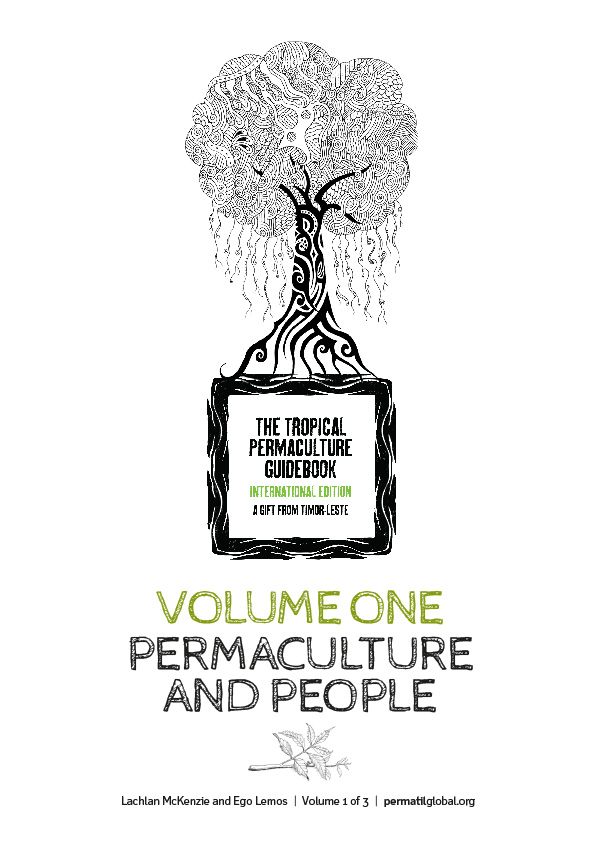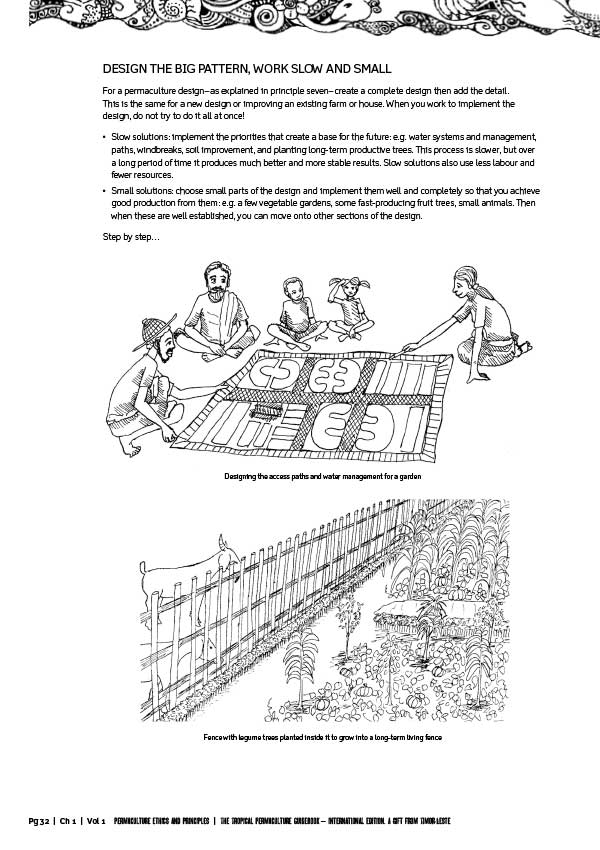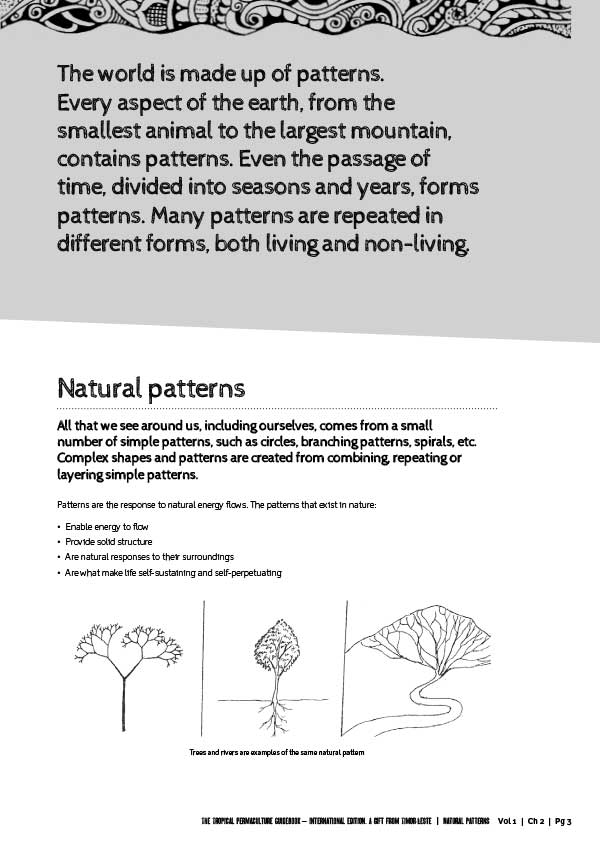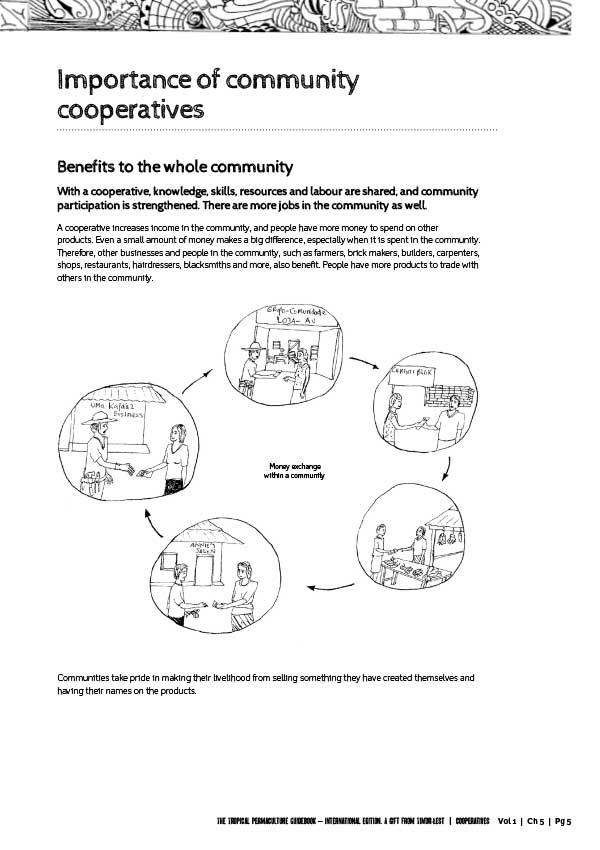Volume 1. Permaculture and people
304 pages
Chapters 1, 2 and 3 are the foundation for the whole guidebook, for volumes one, two and three. They provide the information to design systems and choose the appropriate techniques… more
This volume is available in two sizes:
29.5MB (slow internet connection)
55.1MB (fast internet connection)
Chapters 1, 2 and 3 are the foundation for the whole guidebook, for volumes one, two and three. They provide the information to design systems and choose the appropriate techniques. They are vital to understanding how to create a complete system and the subsequent chapters in all volumes continually refer back to them. Designing and planning are part of the first step for all permaculture practice.
Water catchment methods, such as swales, micro-climates and windbreaks, as good examples of basic strategies and techniques, are included in Ch 3 Permaculture design strategies and techniques because they are relevant to most other chapters.
Chapters 4, 5 and 6 connect permaculture to people and communities, including practical information on:
- Local economies.
- Livelihoods, cooperatives and businesses.
- Permaculture for towns and urban areas.
- Organising and providing courses for new and experienced permaculture trainers.
- Links to related topics such as disaster risk reduction, food sovereignty and transition towns.
Chapters in Volume 1
- Ch 1: Permaculture ethics and principles
- Ch 2: Natural patterns
- Ch 3 Permaculture design strategies and techniques
- Ch 4: Urban and community permaculture
- Ch 5: Cooperatives
- Ch 6: Trainers’ guide






